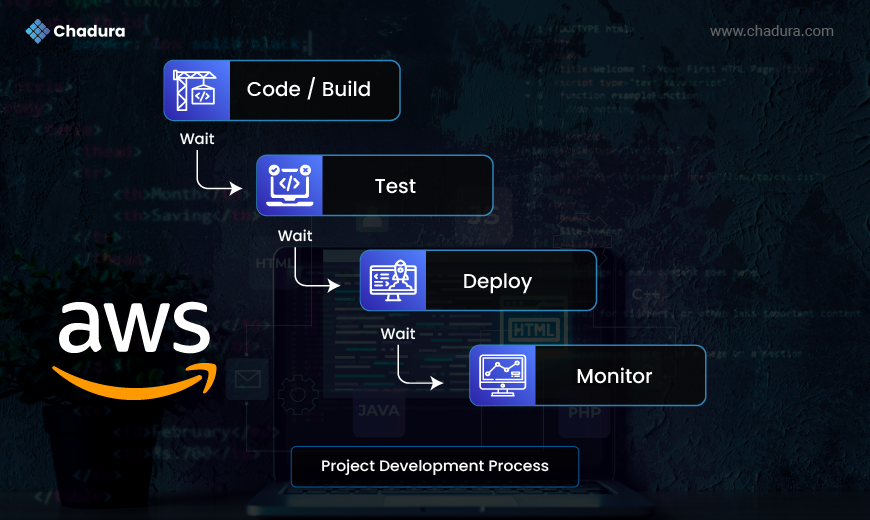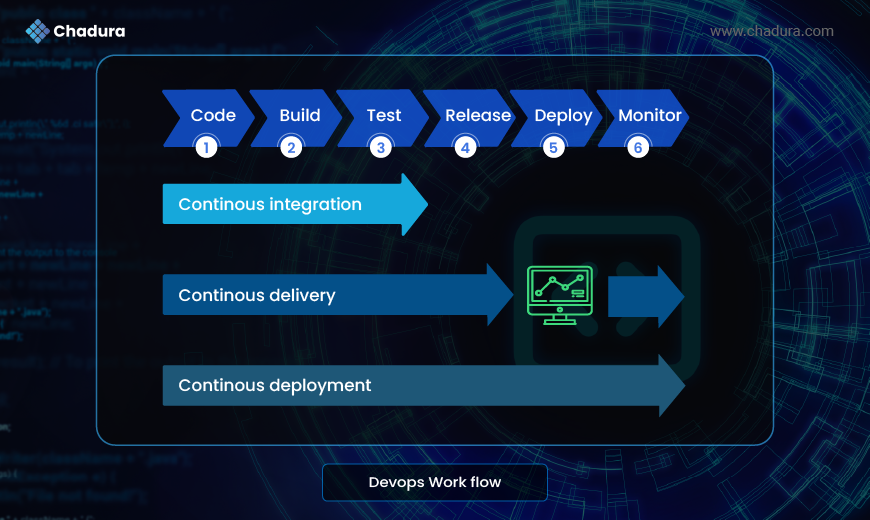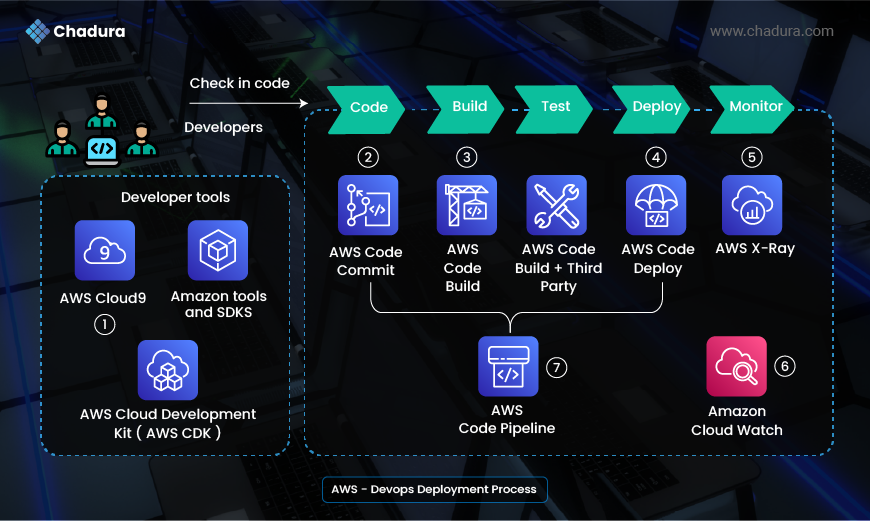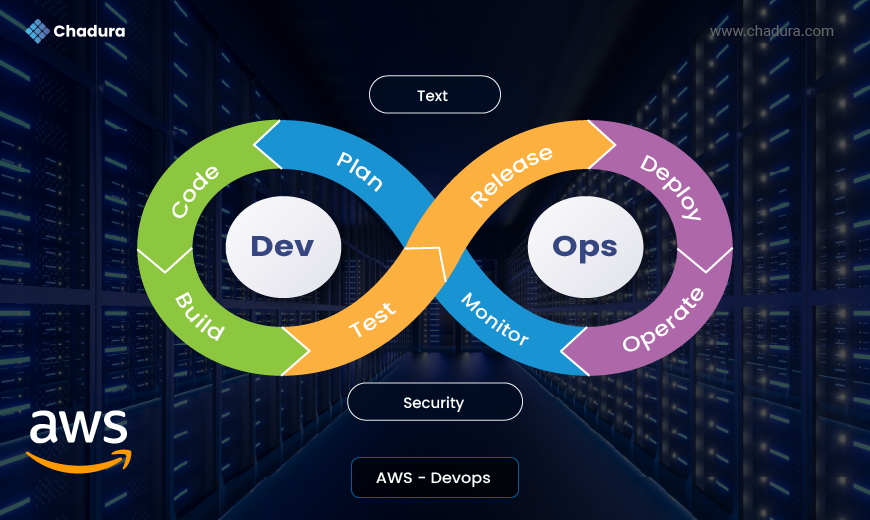What Is DevOps?
DevOps is the combination of cultural philosophies, practices, and tools that increases an organization’s ability to deliver applications and services at high velocity: evolving and improving products at a faster pace than organizations using traditional software development and infrastructure management processes. This speed enables organizations to better serve their customers and compete more effectively in the market.
Developers change things quickly, release often, and measure success by the rate of delivery. Operations are driven by maintaining stability of the application. Frequent releases are a cause for concern of the stability and reliability of the application on the supported platforms, especially during high network traffic.
DevOps is a combination of:
- Cultural philosophies for removing barriers and sharing end-to-end responsibility
- Processes developed for speed and quality, that streamline the way people work
- Tools that align with processes and automate repeatable tasks, making the release process more efficient and the application more reliable
Waterfall development projects
Waterfall development Projects are slow, not iterative, resistant to change, and have long release cycles. Some reasons for this include:
- Requirements are rigid, set at project start, and will likely not change.
- Development phases are siloed, each starting after the previous phase has ended. Each phase is supported by highly specialized teams.
Hand offs from one phase to the other are long, often requiring teams to switch tools and spend time clarifying incomplete or ambiguous information. - Testing and security come after implementation, making corrective actions responsive and expensive.
Monolithic applications
Monolithic applications are hard to update and deploy because they:
- Are developed and deployed as a unit, so when changes are made, the entire application must be redeployed
- Have tightly coupled functionality, so if the application is large enough, maintenance becomes an issue because developers have a hard time understanding the entire application
- Are implemented using a single development stack, so changing technology is difficult and costly
Why DevOps?
According to the Accelerate State of DevOps 2019 report, organizations of any size, and in any industry, can benefit from DevOps. According to the report, teams who successfully adopt DevOps see shorter delivery cycles, decreased change failure rates, and improved performance.
The benefits of DevOps
Organizations of all sizes, from small startups to big enterprises, can benefit from adopting DevOps.
Why do some teams initially resist adopting DevOps?
Reluctance to DevOps adoption is natural because DevOps will bring change and disrupt the way you work and interact with others. DevOps will have organizational and team-level impact. To overcome this reluctance, it is important to understand the value of DevOps, and set realistic expectations for the teams. To be successful, you need buy-in across the organization and development teams.
DevOps methodology increases collaboration through the entire service lifecycle, from product design through the development process to production operations. It brings people together to work and remove obstacles so they can efficiently accomplish their goals. This module will dive deeper into the DevOps methodology: culture, processes, and tools.
DevOps Culture
A shift to DevOps requires creating and nurturing a DevOps culture, which is a culture of transparency, effective and seamless collaboration, and common goals.
You might have the processes and tools to support DevOps but, for successful DevOps adoption, the people of the organization must have the right mindset to nurture the DevOps culture.
There are seven core principles that can help you achieve a DevOps culture.
- Create a highly collaborative Environment
- Automate when Posiible
- Focus on Customer Needs
- Develop Small and re;aese often
- .Include security at every phace
- Continuously Experiment and learn
- Continuosly Improve
Project Development Process
1. Code / Build
Developers write code and push it to a source control system. A build system compiles the code and prepares it for deployment.
AWS Tool:
- AWS CodeCommit – Source control (Git).
- AWS CodeBuild – Compiles code, runs unit tests, and produces artifacts.
2. Test
Automated tests run on the built code to verify correctness, security, and functionality.
AWS Tool:
- AWS CodeBuild (can also handle testing).
- Integrations with JUnit, Selenium, or 3rd-party CI tools.
3. Deploy
Once code passes tests, it gets deployed to development, staging, or production environments.
AWS Tool:
- AWS CodeDeploy – Handles deployment to EC2, ECS, Lambda, or on-prem.
- AWS Elastic Beanstalk – Easy app deployment without managing infrastructure.
4. Monitor
After deployment, the application is monitored for errors, performance, and uptime.
AWS Tool:
- Amazon CloudWatch – Logs, metrics, dashboards, and alerts.
- AWS X-Ray – Traces and analyzes request flows in microservices.
Real-World Use Case
For a company like Chadura (as branded in the image), this pipeline can automate the end-to-end development and release lifecycle for Django apps, containerized microservices, or even static web apps hosted on S3.

DevOps Practices
DevOps culture leads to DevOps practices that are geared toward streamlining and improving the development lifecycle, to reliably deliver frequent updates, while maintaining stability.
To learn more, expand each of the following six categories.
- Communication and Collabration
- Monitoring and observability
- Continuous Integration CI
- Continuos Delivery / Continuous Deployment
- Microservice Architecture
- Infrastructure as a code
A DevOps pipeline is a set of stages that move code from source, all the way to deployment. The graphic that follows depicts typical stages in a DevOps pipeline and depicts the phases involved in a CI/CD pipeline.

A CI/CD pipeline is a good example of how DevOps teams use tools to streamline workflows and standardize practices. A CI/CD pipeline assures code quality, security, and fast, consistent deployments by repeatably progressing through the pipeline. DevOps teams iteratively remove process overlaps, human errors, and bottlenecks through automation.
Every DevOps team requires an efficient and reliable CI/CD pipeline. A CI/CD pipeline requires a well-integrated tool chain.
Benefits of Using AWS DevOps
Speed and Agility: Rapid development, testing, and deployment cycles.
Reliability: Automated rollback and blue/green deployments reduce downtime.
Scalability: Easily scale infrastructure based on demand using auto-scaling groups.
Security: IAM roles, VPCs, Secrets Manager, and audit trails offer robust security controls.
Cost-Efficiency: Pay-as-you-go pricing with efficient resource usage.
AWS - Devops Deployment Process

Conclusion
AWS DevOps empowers teams to deliver software with greater speed, consistency, and confidence. By leveraging AWS's suite of tools, development and operations teams can collaborate more effectively, respond to changes faster, and achieve better operational efficiency. Whether you're a startup or an enterprise, implementing DevOps on AWS is a strategic move that supports innovation, agility, and scalability.





